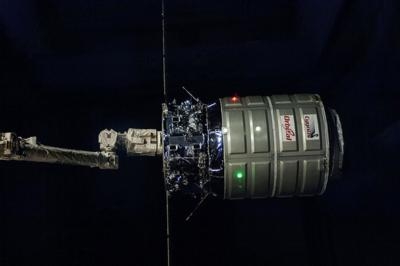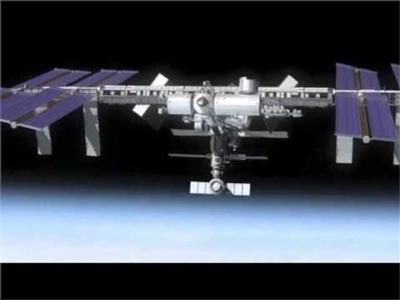Wed, Jun 15, 2016
Has Departed ISS, Now Conducting Science In Space
The “S.S. Rick Husband” Cygnus spacecraft successfully departed from the International Space Station at 0930 EDT Tuesday, completing an 81-day stay at the orbiting laboratory. The mission, known as OA-6, began on March 22, 2016 when Cygnus launched aboard a United Launch Alliance Atlas V rocket from Cape Canaveral Air Force Station, Florida. Cygnus delivered 7,900 pounds of cargo and science experiments to astronauts aboard the station. Prior to its departure, the astronauts loaded the unmanned cargo module with approximately 4,087 pounds of items for disposal.

Orbital ATK’s fifth mission under NASA’s Commercial Resupply Services-1 (CRS-1) contract now begins its second phase before the planned reentry of Cygnus into Earth’s atmosphere. Cygnus will conduct three, in-orbit science experiments: the Spacecraft Fire Experiment-I (Saffire-I), the deployment of five CubeSat satellites from the NanoRacks CubeSat Deployer and the Reentry Breakup Recorder (REBR) test.
“Cygnus had a successful, two-and-a-half-month stay at the International Space Station, delivering vital cargo to the astronauts,” said Frank Culbertson, President of Orbital ATK’s Space Systems Group. “Now, the work continues as we demonstrate expanded capabilities for Cygnus beyond its core cargo delivery function. The next phase of this mission marks the first time that Cygnus will serve as a research platform to support science experiments that enable deep space exploration. Our ability to conduct these tests further highlights the versatility and flexibility that Cygnus offers to our customers.”
The Spacecraft Fire Experiment-I (Saffire-I) will feature the first of three tests to study the behavior of large fires in microgravity. Following departure from the International Space Station, engineers will remotely conduct the first Saffire experiment. Onboard Cygnus, the experiment developed at NASA’s Glenn Research Center with the support of NASA’s Advanced Exploration Systems Division will intentionally ignite and record a large-scale fire that will grow and advance until it burns itself out.

Next, using a deployer provided by NanoRacks, the “S.S. Rick Husband” will place five CubeSats into orbit to conduct their own autonomous missions.
The final experiment to take place aboard Cygnus features the Reentry Breakup Recorder (REBR). REBR will measure and record data during Cygnus’ safe destructive reentry into Earth’s atmosphere. The scheduled date for reentry is June 22, officially ending the OA-6 mission.
(Source: Orbital ATK news release. Images from file)
More News
Aero Linx: Transport Canada We are a federal institution, leading the Transport Canada portfolio and working with our partners. Transport Canada is responsible for transportation p>[...]
Gross Navigation Error (GNE) A lateral deviation from a cleared track, normally in excess of 25 Nautical Miles (NM). More stringent standards (for example, 10NM in some parts of th>[...]
From AirVenture 2017 (YouTube Edition): Flight-Proven Booster On Display At AirVenture… EAA AirVenture Oshkosh is known primarily as a celebration of experimental and amateu>[...]
Aircraft Parachute System (CAPS) Was Deployed About 293 Ft Above Ground Level, Which Was Too Low To Allow For Full Deployment Of The Parachute System Analysis: The day before the a>[...]
Also: 48th Annual Air Race Classic, Hot Air Balloon Fire, FAA v Banning 100LL, Complete Remote Pilot The news Piper PA-18 Super Cub owners have been waiting for has finally arrived>[...]
 ANN's Daily Aero-Linx (06.29.25)
ANN's Daily Aero-Linx (06.29.25) ANN's Daily Aero-Term (06.29.25): Gross Navigation Error (GNE)
ANN's Daily Aero-Term (06.29.25): Gross Navigation Error (GNE) Classic Aero-TV: Anticipating Futurespace - Blue Origin Visits Airventure 2017
Classic Aero-TV: Anticipating Futurespace - Blue Origin Visits Airventure 2017 NTSB Final Report: Cirrus SR22
NTSB Final Report: Cirrus SR22 Airborne Affordable Flyers 06.26.25: PA18 Upgrades, Delta Force, Rhinebeck
Airborne Affordable Flyers 06.26.25: PA18 Upgrades, Delta Force, Rhinebeck




